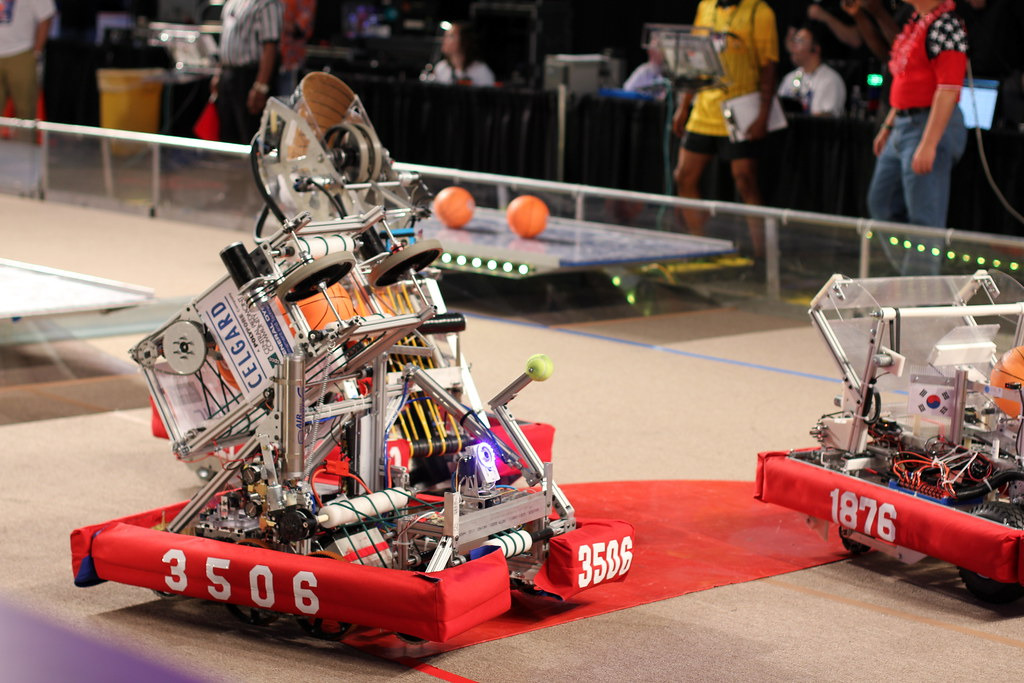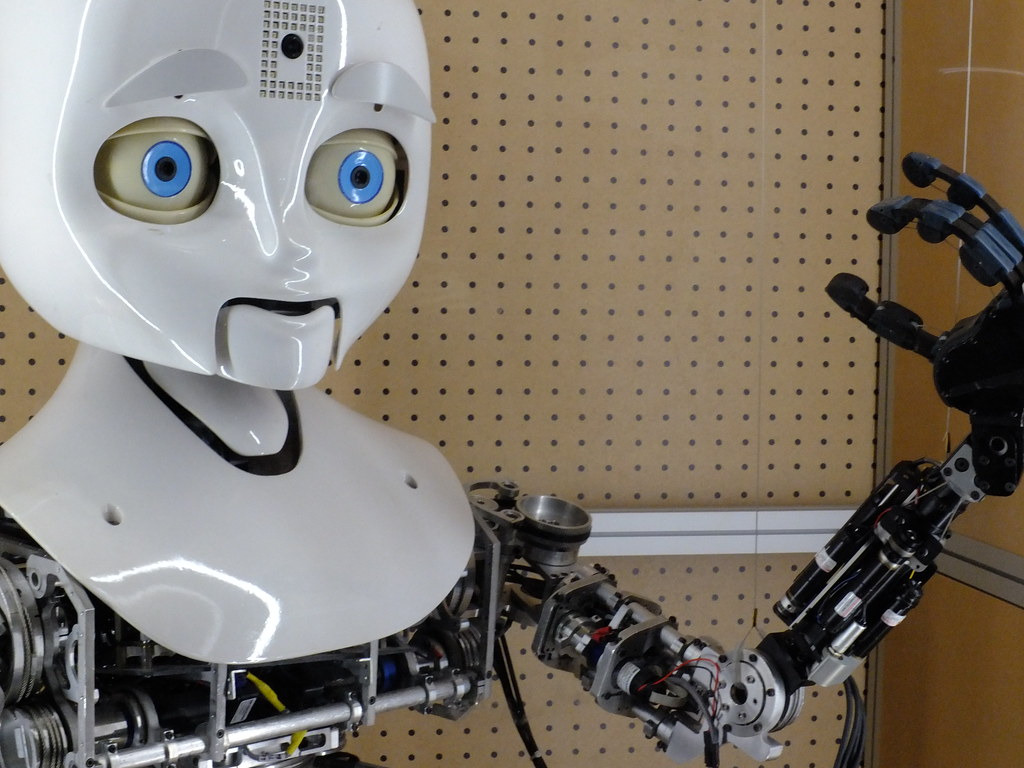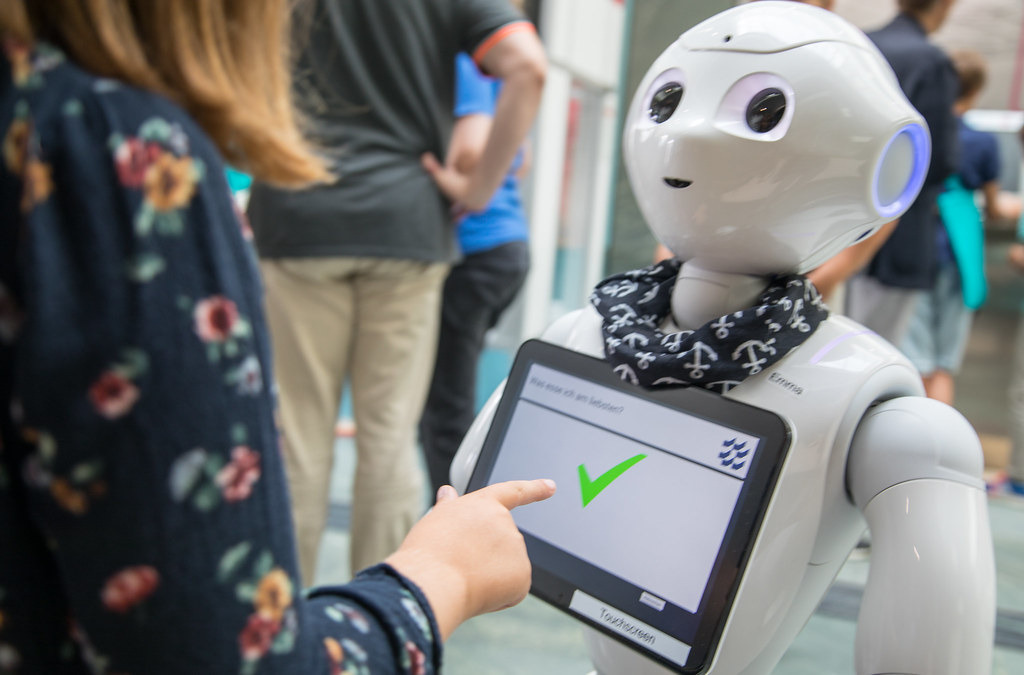Media makes many people mistake robots for large machines with intelligence equal to humans.
How many types of standard robots are there, and what is their application? Are these machines thinking more advanced than humans?
Current robots have superior intellectual and mechanical abilities. To find answers to all the questions above, refer to the shares below.
What is Robotics?
Robotics is an essential field in electronic engineering. This industry includes all activities from conceptualizing, designing, and operating robots.
The above tasks aim to create machines that can support humans well. In other words, robots are intelligent machines. Its design simulates how humans interact with software and helps people solve problems.
However, most of today’s robot models are usually in robot applications or machines that perform repetitive tasks according to rules.
History of Robotics

The term “robot” first appeared in 1920. This term does not refer to intelligent machines. In these years, robots still need to be designed to serve human life.
In 1940, science fiction author Isaac Asimov created works featuring robots. He was also the first to develop guidelines for robots and intelligent machines.
His stories, though not about how to build robots, have inspired scientists and engineers. However, it was not until 1961 that the first programmable robot was born. In the early days, people used this robot model to move burning metals from the casting machine.
Robotic Types

After improvements with advanced techniques, robots now have more than one ability to move metal fragments. Intelligent machines have different designs, functions, and operating principles. Below are popular robot types, classified by their ability to operate.
1. Pre-programmed robots
Pre-programmed robot models will only be able to handle a few different types of jobs. It works best in a controlled environment and correctly completes simple and pre-installed tasks.
In automobile assembly or production lines, these robot models are widely used. These intelligent machines get the job done quickly, accurately, and efficiently.
2. Humanoid robots
Unlike pre-programmed robots, humanoid robots are more flexible. They have a human-like appearance to mimic human behavior instead of bulky machines.
Today’s most famous human models are Sophia from Hanson Robotics and Atlas from Boston Dynamics. These robots have human-like expressions and faces and can even answer simple questions.
3. Autonomous robots
The self-propelled robot is the most widely used in human life. As the name suggests, this robot model will complete the task without human supervision.
These robot models often come with sensors and computer decision-making structures to complete the assigned task.
Popular autonomous robots include drones, lawnmowers, and hotel bots.
4. Teleoperated robots
The remote control robot will allow the user to give commands to the robot wirelessly. These robot models often appear on construction sites or areas with harsh weather and geographical conditions.
For example, remotely controlled submarine robots will detect and fix pipeline leaks, or drones will detect and destroy landmines on the battlefield.
5. Augmenting robots
This robot is also known as a VR robot. It can replace lost abilities or enhance one’s current skills. It’s still a relatively new field. And current scientists are constantly working to develop their models.
The most recent achievements are prosthetics or prostheses with neural sensations like humans. American scientists are developing exoskeletons to help support heavy objects.
Robotics Use Cases
Scientists are researching and developing rapidly. But whatever form it takes, the robot focuses mainly on good support for people’s work and life. Here are some typical applications that robots can handle well. Keep scrolling down!
1. Software programming
Robotics and software coding are two inseparable fields. Robots with software installed in the processor will work more smoothly and efficiently. But these can also be available for writing software code.
Simple models can generate basic code from huge libraries. Robots will share the burden with programmers to quickly get the job done with high precision.
However, despite a lot of improvements, these machines have yet to be able to replace programmers completely. Professional and complex coding still needs to be solved for them.
2. Retail

Robotic automation is currently an area that multi-channel virtual agents are interested in. With the robot’s help, agents can quickly collect customers’ shopping habits and trends, reaching customers faster and more efficiently.
Also, its application extends to retail. It automatically generates personalized offer codes, returns goods to customers, and provides the best user experience.
3. Human resources
Human resource management is also a field that enjoys many benefits when robots appear. Using robots, recruiters and stakeholders can track a candidate’s application process. They also gather information to make accurate decisions.
4. Finance and Accounting
Robots will help banking and financial institutions forecast revenue and cash flow. Some more competent robot models can support security, risk prevention, compliance monitoring, and more professionals.
5. Sales
Currently, online stores are switching to chatbots and receiving a lot of positive feedback. According to some studies, 74% of shoppers refrain from talking to salespeople. With a robotic chatbox, potential customers can be more comfortable communicating and tend to shop more.
6. Contact centers
Centers and organizations can effectively link together using virtual service channels such as chatbots or IVRs. Employees will access information and reduce time spent performing repetitive manual tasks.
7. Content creation
Some argue that robots can replace content creators. The proof is that today, too many intelligent applications are creating articles, distributing information, and even elemental composition.
However, shortly, AI and robots can hardly replace writers. Currently, these tools only play a supporting role, helping content creators work more efficiently.
Conclusion
I hope the above sharing is applicable and arouses your interest in learning about your robot. If you have any related questions, remember to comment or contact us via email to receive timely responses.
Thank you for reading.

